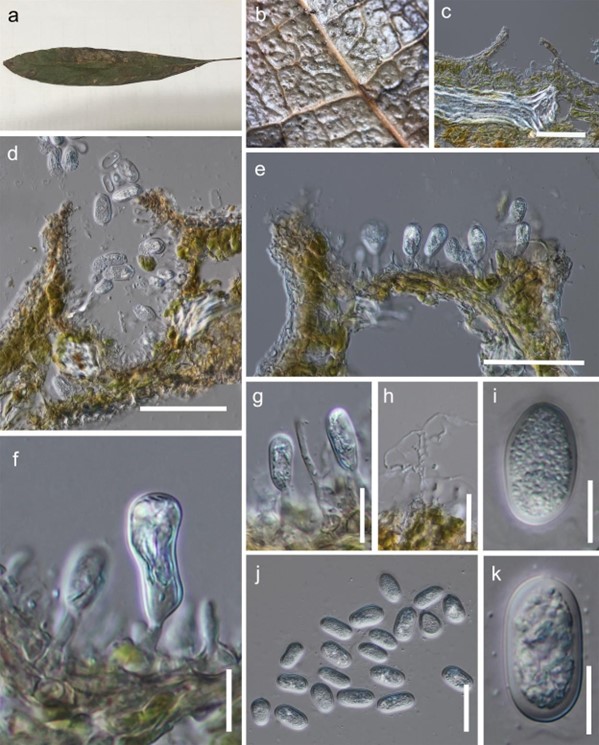Pseudoplagiostoma Cheew., M.J. Wingf. & Crous, Fungal Divers. 44: 96 (2010)
MycoBank number: MB 516496; Index Fungorum number: IF 516496; Facesoffungi number: FoF 02128; 7 species with sequence data.
Type species – Pseudoplagiostoma eucalypti Cheew., M.J. Wingf. & Crous
Notes – Pseudoplagiostoma is a foliar pathogen of Eucalyptus with astromatic, slanted to horizontal, globose perithecia lacking paraphyses, with aseptate ascospores with terminal, elongate, hyaline appendages and a cryptosporiopsis-like asexual morph. Cryptosporiopsis eucalypti falls in Diaporthales in the phylogenetic analyses using combined gene analysis of ITS and tub2 gene sequence data which resolved the species in Pseudoplagiostoma (Cheewangkoon et al. 2010). A newly added species is P. dipterocarpi, an asexual endophyte isolated from the leaves of Dipterocarpus tuberculatus in Chiang Mai, Thailand (Suwannarach et al. 2016). The asexual morph of Pseudoplagiostoma mangiferae isolated from a living leaf of Mangifera in Yunnan, China was introduced by Phookamsak et al. (2019) based on the morphology and phylogenetic analyses of a combined ITS, LSU, tub2 and tef1 dataset.

Figure 213 – Pseudoplagiostoma mangiferae (Material examined – CHINA, Yunnan Province, Xishuangbanna, Jinghong, Nabanhe, associated with leaf blight symtom on living leaf of Mangifera sp. (Anacardiaceae), 21 November 2015, R. Phookamsak, XB010, KUN-HKAS 102244, holotype). a Leaf blight symptom on living leaf of Mangifera sp. b Conidiomata on host surface. c, d Sections through conidiomata. e Conidioma wall and the base. f, g Conidiogenous cells. h Paraphyses. i-k Conidia. Scale bars: c-e = 50 μm, f-h = 20 μm, j = 25 μm, i, k = 10 μm.
Species
